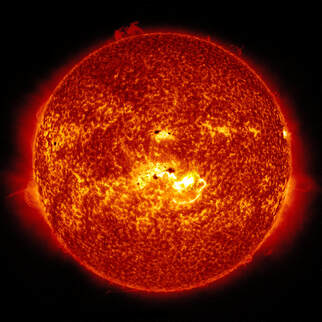SUN
(Naato'si)
|
Our Sun is a fairly large star at the centre of our Solar System. It is a ball of hydrogen gas so large that over a million Earths could fit inside it! The Sun generates its light deep in its core, where there is so much heat and pressure that the hydrogen gas is fused into helium. This releases a lot of energy, which keeps the Sun bright and hot. Four millions tons of mass is turned into energy in this way every single second! This energy heats the entire Solar System and provides the conditions for life on Earth. |

